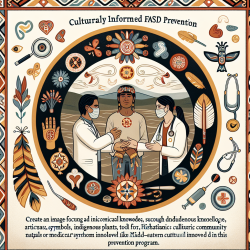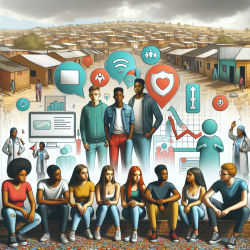Introduction
The COVID-19 pandemic has profoundly impacted global mental health, leading to a significant rise in anxiety and depression rates. As educators and therapists, it is crucial to integrate evidence-based strategies into our practices to address these challenges, particularly in school settings where children and young people are most vulnerable. The research article, "Strengthening public mental health during and after the acute phase of the COVID-19 pandemic," provides valuable insights and recommendations for enhancing mental health services. This blog will explore how practitioners can leverage these findings to improve outcomes for children.
Understanding the Impact
The pandemic's first year saw a 25% increase in anxiety and depression worldwide, with young people at heightened risk of suicide and self-harm. The long-term effects of COVID-19 on mental health remain uncertain, necessitating a robust response from mental health professionals. The WHO's updated Comprehensive Mental Health Action Plan outlines strategies to promote mental health and prevent disorders, emphasizing the need for effective service coverage and research.
Implementing Research Findings in School Settings
For practitioners working in schools, the following strategies can be implemented to strengthen mental health services:
- Community-Based Resources: Utilize community resources as infrastructure during health emergencies. This approach can help bridge treatment gaps and provide concrete evidence related to universal health coverage.
- Epidemiological Studies: Conduct studies to explore the impacts of COVID-19 containment measures on mental health. This data can inform service development and psychosocial responses in schools.
- Evidence-Based Interventions: Increase research on interventions that support psychological well-being and promote resilience. Schools can serve as partners in delivering these interventions, helping to reduce the risk of mental illness in later years.
- Digital Interventions: Evaluate the effectiveness of digital interventions during the pandemic. Leveraging technology for service delivery can enhance real-time surveillance and disease trend projections.
Addressing Disparities and Building Resilience
The WHO action plan recognizes the disproportionate impact of crises on vulnerable groups. Practitioners should focus on:
- Health Disparities: Accelerate research on health disparities, including barriers to access, to improve preparedness and resilience of mental health services.
- Multisectoral Collaboration: Foster partnerships within the health sector and collaborate with government agencies to expand mental health services at the community level.
- Preventing Maltreatment: Develop strategies to prevent maltreatment and violence in vulnerable subgroups, such as children and individuals with disabilities.
Conclusion
By integrating these strategies into school-based mental health practices, practitioners can create a supportive environment that promotes mental well-being and resilience among students. The ongoing challenges of COVID-19 and global unrest highlight the need for a broader scope of mental health services. Practitioners are encouraged to continue researching and adapting their approaches to meet the evolving needs of their communities.
To read the original research paper, please follow this link: Strengthening public mental health during and after the acute phase of the COVID-19 pandemic.










